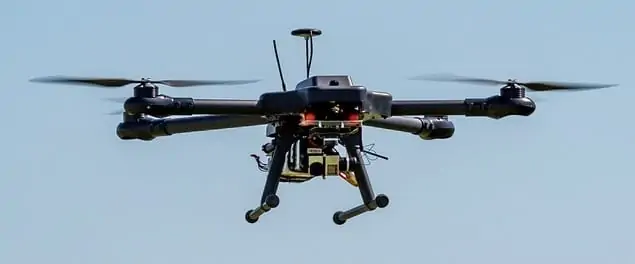Qelzal has announced that it has begun testing of its new “Sense and Avoid” system, which enables commercial drones to avoid obstacles while traveling long distances and performing complex work such as inspections and data collection.
“Many countries, including here in the U.S., restrict commercial drone operations Beyond Line-Of-Sight due to the potential high risk of catastrophic accidents,” said Qelzal CEO, Rob Benson. “Qelzal reduces the inherent risks while at the same time extending the capability of commercial drones by giving these machines human-like vision and obstacle avoidance which we humans enjoy as part of life.”
The Qelsafe Air1 system uses Image Free Sensing combined with Qelzal’s patent-pending, brain-inspired, artificial intelligence that performs the heavy lifting of rapid response and collision avoidance. Qelzal’s technology aims to turn normal commercial drones into a more responsive and intelligent machines.
Near-misses and close calls caused by commercial and non-commercial drones are already commonplace and these dangerous incidents are sure to continue as the ubiquity of commercial drones continues. The company expects to sell to and integrate the system with commercial UAV service companies wanting to save time and increase profits through efficiency increases and risk mitigation.
This new phase of system testing will include “worst case scenario” testing. At present, operators have to be able to see oncoming aircraft to avoid a collision. Qelzal reduces human error by eliminating the human factor from collision situations and embedding commercial drones with collision avoidance technology that could save money in unforeseen liability costs.
The Qelzal system uses vision sensors that are designed for a variety of applications, including commercial drones, autonomous vehicles and augmented reality. The company is aiming for commercial operations that demand a high speed, frameless approach that is different and more cost effective than traditional, expensive aircraft safety systems. While the Qelzal Qelsafe Air1 system is a passive, “quiet”, alternative to traditional radar and ultrasound approaches, it also requires far less power, resulting in longer flight times.
According to founder and CTO, Olivier Coenen, “We are excited about the progress of our research and development, and we look forward to continuing to leverage deep learning, human-like algorithms to enhance the detection and response capabilities of our high speed and long-distance sensors.”
Find suppliers of Sense-and-Avoid systems for drones here



















